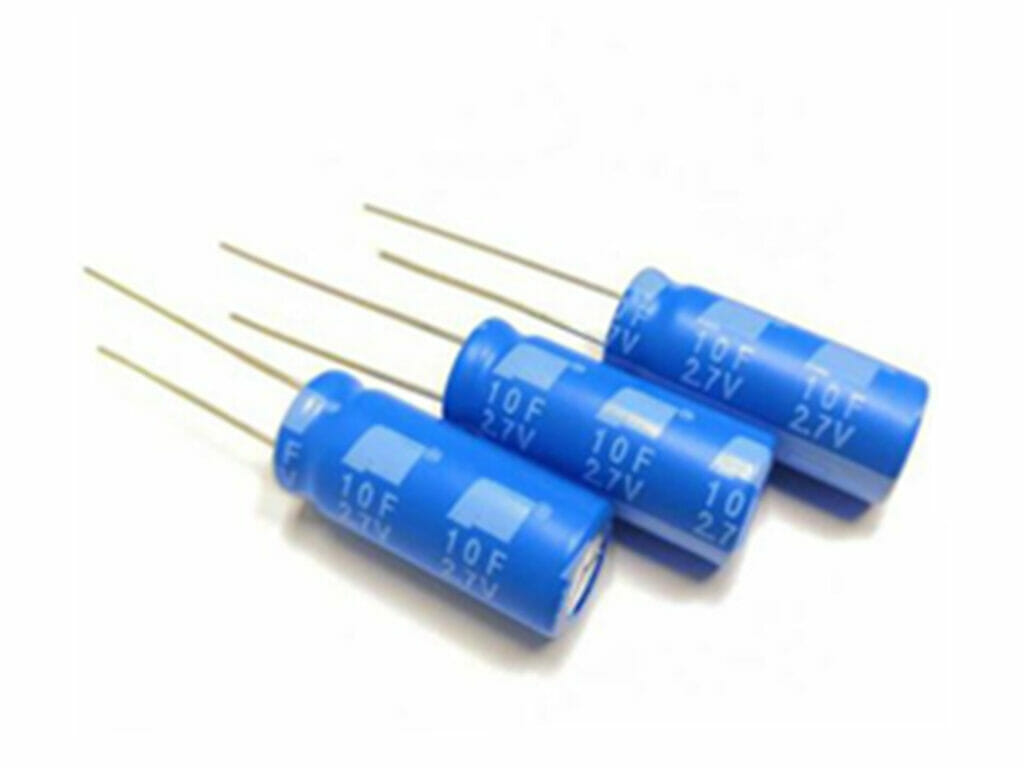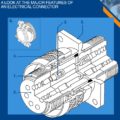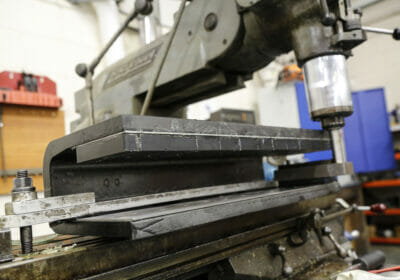Because of the growing market of EVs and renewable energy systems, manufacturers increasingly often recognise the potential of high-capacitance capacitors, also called supercapacitors. Although those components still have not become a real alternative to battery cells, they have proven to be irreplaceable in a number of applications…
Recently, the TME catalogue has been expanded to include products from Viking. The brand is owned by a Taiwanese manufacturer of electronic components. The Viking portfolio includes products such as THT resistors, miniature MLCCs, chokes and EMI/EMC ferrites. Their production facilities have all the certificates allowing for the manufacturing of components that are compliant with industrial, medical and automotive standards and get distributed all around the world.
Below, we present a remarkable fraction of the Viking offer – a selection of supercapacitors which provides a choice of different product variants and a wide range of parameters. Make sure you familiarise yourself with the information provided below and take a look at the products offered in our catalogue.
In this article, we mention the following topics:
- Applications and general features of supercapacitors
- Deciphering the symbols used in the Viking offer
- Operating voltages of high-capacitance capacitors
- Coin type and combined supercapacitors
- Capacitance of supercapacitors and how it is marked
- Components with a higher thermal and voltage tolerance
Supercapacitors from Viking

The application of supercapacitors is determined by their increased capacitance and short charge and discharge cycles. This allows them to store large amounts of energy and provide high amperage. Thanks to these features, in some respects, supercapacitors have an advantage over “traditional” modes of storing electrical energy, such as batteries. As a consequence, they are used in electric vehicles, regenerative braking mechanisms, for high-power motor start-up (e.g. in rail transport), in renewable energy systems (wind turbines) as well as energy storage and emergency power supply controllers.
The advantages of supercapacitors also include long service life – in terms of the number of charge/discharge cycles, they outmatch Li-ion and Li-poly batteries (the number of cycles is equal to almost 500,000 when appropriate conditions are maintained). What is more, the components are virtually maintenance-free, thanks to the fact that they operate on the basis of physical phenomena, instead of chemical ones. Supercapacitors also exhibit an immensely high efficiency and energy density, which expands their range of applications.
It is also important to note that the technologies used in supercapacitors are constantly evolving. The Viking portfolio is a perfect illustration of the diversity in this field. The products offered by the supplier are available in a number of formats, intended for different applications. The type and specification of the capacitor is indicated by the product symbol.
Deciphering the symbol
To learn about the range of available features, let’s take a closer look at the symbols used by Viking for marking their supercapacitors. The following symbol will serve as an example: “SC2V7L105MLR”. As you can see, it can be divided into 6 segments, each representing a particular feature of the component.
| Product type | Operating voltage | Body type | Capacitance | Tolerance | Series code |
| SC | 2V7 | L | 105 | M | LR |
Product type
The symbols follow the same pattern for all Viking products. As a result, in the case of supercapacitors the first two characters will always have the same form, namely SC which stands for Super Capacitor.
Operating voltage
Contrary to other capacitors, the high-capacitance components usually operate at low voltages. As regards the products described in this article, the value of voltage will be equal to 2.7 V or 5.5. V DC (which is represented by the 2V7 and 5V5 sequence of characters). Through TME, you can also purchase supercapacitors from Viking, which support voltages of 3 V, 3.8 V and 6 V DC.
Body
The body type not only determines the way in which the capacitor can be mounted, but it also indicates the production technology and, indirectly, its general purpose. Components provided by Viking can be divided into three types: coin (which has lower capacitance), lithium-ion (a specific technology used in the production of such components which is described below) and standard (cylindrical).

In the case of coin type capacitors, their capacitance and current are lower than the ones exhibited by other supercapacitor types. Such components are intended for use in compact devices (energy meters, torches), where they serve as energy storage e.g. to maintain the operation of a real-time clock. Depending on the type of circuit, the amount of time for which the component can keep the clock running ranges from a few seconds to several months. Coin type supercapacitors have been marked with letters C, H or V, which correspond to different methods of THT mounting (vertical, angled).
The letter M refers to lithium-ion type capacitors (often abbreviated to LIC). They have standard, cylindrical bodies. These hybrid components are equipped with an anode which consists of a material doped with lithium-ions (similarly to the one used in Li-ion batteries). The cathode, at the same time, is made with the use of activated carbon. Thanks to this, the capacitor exhibits high energy density, wide thermal tolerance and can operate at relatively high voltages.
The standard supercapacitors in cylindrical bodies from Viking which can be found in the TME catalogue are available in two variants: single (the letter L) and combined (the letter Z) . The latter model has been designed as two adjoining cylindrical bodies, thanks to which better electrical parameters and the minimal product volume (shown in the picture) can be achieved.
Capacitance
Capacitance of supercapacitors is described in µF (microfarads) by means of a three-digit code. The first two digits represent the base of an exponent, the last one refers to the order of magnitude (the number of zeros). For instance, if the product is marked as 104, it means that its capacitance is equal to 10 µF multiplied by 10000, that is 100000 µF, 100 mF or 0.1 F. In this way, very high capacitances can be easily described (e.g. a 308 code would represent 3000 F).
Tolerance
Tolerance refers to the actual capacitance of the capacitor and can be marked with one of three symbols: M (±20%), Z (+80%/-20%) or 9 (+30%, -10%).
Series code
The 6th segment of the symbol (after the 10th character) indicates the subseries of the capacitor. In other words, it marks the special features of the components. If the product does not display any special features, the segment will be empty. In this part of the symbol, three codes are used (LR, V, H), however, only two of such product types are available at TME: supercapacitors included in the H subseries with an increased thermal tolerance and the V products, intended for operating at voltages exceeding 2.7 V DC. For most products, operating temperatures range from -40°C to 70°C, while for the components marked with the H symbol they vary from -40°C to 85°C.
Text prepared by Transfer Multisort Elektronik Sp. z o.o.
https://www.tme.eu/gb/news/library-articles/page/53487/supercapacitors-offered-by-viking/






